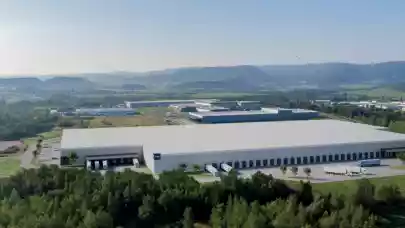
Some of the historic heritage buildings are crying for conversion for commercial use in many cities across the CEE region. Property Forum asked Mihály Schrancz, CEO and founding partner of newly-founded development company Realis Development Plc., about the risks and special preparation for such projects.
What are the first steps in a heritage development project? How about adjusting the different interests of stakeholders?
The first step in a heritage project is the preparation of an expert opinion, a so-called inventory of values. In some cases, the document relating to the listing is available, in other cases the first part of the expert opinion (usually based on archival research) will cover the history of the building, its style, the architect, and the period. A subsequent chapter states if there are plans available for the building, even if it has been altered in several stages. The expert then surveys the building, recording its condition with photographic documentation. Finally, they state what they consider to be valuable, and what and how they propose to protect it.
Once this material is available, the development concept can start to be drawn up and the architect can be involved. The architect will start work based on this expert material, in close cooperation with the expert. The concept design and the expert opinion should be closely consulted with the representatives of the heritage authority from the initial stage, and the design should be developed in close cooperation with them.
Reconciling interests is usually a long and bumpy road. The developer and the architect will argue that the building should be renovated with due humility, but also meet 21st-century requirements, as financing only becomes available if these can be enforced. The authority is keen to ensure that as little intervention as possible is made and that the structures in the building are restored to their original condition in as many places as possible.
We have plenty of historical buildings in CEE suitable for renovation and conversion for commercial use. However, local regulations could hamper the whole development process. What is your advice to overcome those hurdles?
In recent years, there has been a great deal of variation in what investors are or are not allowed to do under the current historic preservation regulations. In my experience, the key issue is to select a truly qualified team, both in terms of the expert and the designer. The renovation or conversion of such a building is obviously also a regulatory issue, but there is much more room for consultation here, and with the right humility, it is always possible to find a common denominator with the authority representatives.

Do you agree that a much bigger part of the industrial heritage on brownfield sites might be converted into residential or retail units?
Industrial buildings of stunning beauty can be found in the brownfield areas of Budapest. My own experience shows that their utilization is typically much more difficult than repurposing downtown palace buildings, for example. These buildings are less suitable for modern uses because of their tract depth, amount of dark space, and characteristic of the façade openings (small number of openings). There are exceptions, of course, but finding the right function is an incredibly difficult task.
Heritage projects usually need much more money than other types of commercial development. What has to be considered in terms of financing such projects?
Yes, the costs are typically higher for such projects, but overall, the same market and economic rationales apply to modern buildings. These projects only have a raison d'être if there is an end-user willing to pay a premium to live or work in a heritage building in the given market environment, but that premium cannot be completely divorced from the market. That is why the development of these projects requires much more careful preparation.
How about the valuation of such projects? What do appraisal firms consider?
The valuation principles are not fundamentally different for old and newer buildings. According to the rules of the trade, the sales prices of similar buildings are being considered during a valuation process. When there is income, they are valued the same way as usual. The difference comes from these buildings having higher conversion costs.
Sustainability and ESG compliance are compulsory today for every environmentally cautious developer. What are your experiences in this field?
There is an extreme viewpoint in the sustainability discourse that to minimize the use of cement and concrete new buildings should not be constructed today, they should only be rebuilt and renovated. For the time being, I do not share this radical view, but I am sure that the renovation of old buildings – including listed buildings – will play an increasingly important role and that the process will speed up.
What are the ways of promoting heritage conservation? Do you think tax incentives or development rights transfer might help to do this job?
While there are those first-rate listed buildings where everything should be preserved down to the last door handle, I rather associate with the opinion of the former head of Austrian heritage protection expressed at a conference: buildings are essentially meant to be used. In the case of listed buildings, heritage elements need to be protected with the right techniques, but today’s functional requirements also need to be simultaneously considered during the redevelopment. This is a fundamental guarantee and condition for having the money to renovate these buildings. State support for the renewal of listed buildings in the form of tax breaks or other rights could also enable developers to use these properties.



